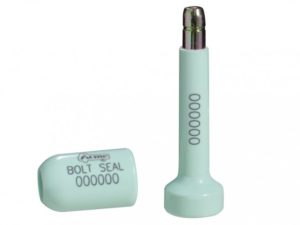
HMRC Compliant Seals
In the world of international trade, customs regulations play a crucial role in ensuring the smooth flow of goods across borders. One regulatory body that holds significant influence is the HM Revenue and Customs (HMRC) in the United Kingdom. HMRC is responsible for enforcing customs and excise regulations, collecting taxes, and preventing illegal activities. To comply with HMRC requirements, businesses must consider using HMRC-compliant seals to secure their cargo during transportation.
What is HMRC?
HM Revenue and Customs (HMRC) is the UK’s tax authority and plays a vital role in regulating customs procedures and common transit procedures. HMRC is responsible for overseeing imports and exports, collecting customs duties, and preventing smuggling and illegal trade activities. They enforce strict regulations to ensure the integrity of the supply chain and facilitate lawful trade.
History of HMRC

The history of HMRC can be traced back to the merger of two major UK government departments in 2005: Her Majesty’s Customs and Excise (HMCE) and the Inland Revenue. This merger aimed to streamline tax administration and customs operations, creating a more integrated and efficient system.
Before the merger, HMCE was responsible for customs and excise duties, including the collection of taxes on imported goods. They also played a crucial role in border control and preventing illicit activities such as smuggling. On the other hand, the Inland Revenue focused on the collection of income tax and the administration of other direct taxes.
The merger of these two departments resulted in the formation of HMRC, which became the UK’s central authority for tax and customs matters. This consolidation allowed for greater coordination and collaboration between tax and customs functions, enabling a more comprehensive approach to revenue collection and trade facilitation.
Purposes of HMRC Compliant Seals
HMRC certified security seals serve multiple purposes when it comes to customs compliance. These seals are specifically designed to meet the stringent standards and requirements set by HMRC. Their primary purposes include:
- Security: HMRC-compliant seals provide a robust barrier against tampering, theft, and unauthorized access to cargo. They act as visual indicators, giving customs officials confidence that the goods have remained intact throughout the transportation process.
- Traceability: HMRC places great importance on traceability within the supply chain. Compliant seals feature unique identification numbers or barcodes, allowing for easy tracking and accountability. This ensures that the goods can be traced back to their origin, providing transparency and reducing the risk of counterfeit or illicit trade.
- Compliance Verification: By using HMRC-compliant seals, businesses demonstrate their commitment to customs compliance. These seals act as tangible evidence that the company has taken necessary measures to secure its shipments in accordance with HMRC regulations.
Acme Bolt Seal and Metal T Seal Compliance for HMRC

When it comes to HMRC-compliant seals, the Acme Bolt Seal and Metal T Seal are two notable options that meet the required standards. These seals have obtained HMRC certification, ensuring their compliance with stringent customs regulations. Here are some key features of these compliant seals:
- High Security: Both the Acme Bolt Seal and Metal T Seal provide a high level of security, making them suitable for safeguarding valuable or sensitive cargo. They are constructed with robust materials and feature unique locking mechanisms to deter tampering.
- Traceability: These seals are equipped with unique identification numbers or barcodes, enabling easy traceability and accountability. This feature aligns with HMRC’s emphasis on supply chain visibility and traceability.
- Tamper-Evident Design: The Acme Bolt Seal and Metal T Seal have tamper-evident features that provide visible evidence of any tampering attempts. These features include indicators such as color changes or irreversible locking mechanisms, ensuring the integrity of the seal.
Conclusion
HMRC plays a crucial role in ensuring customs compliance and securing the UK’s borders. To meet the requirements set by HMRC, businesses must prioritize the use of HMRC-compliant seals when transporting goods across borders. These seals provide enhanced security, traceability, and compliance verification.
The Acme Bolt Seal and Metal T Seal are examples of seals that have obtained HMRC certification, assuring their compliance with HMRC’s rigorous customs regulations. By utilizing HMRC-compliant seals, businesses can demonstrate their commitment to customs compliance and contribute to the integrity of the supply chain.